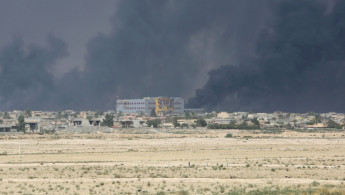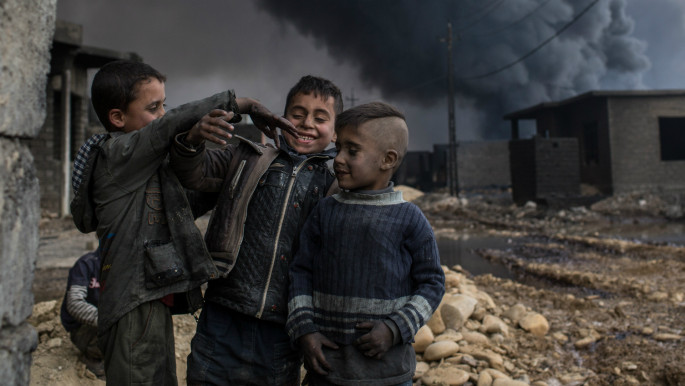Iraqis finally putting out oil fires set by IS
“The atmosphere is good. The wells are almost fully under control. They extinguished most. Some of them are still ablaze, but we see the morning, we can see the sun,” shop owner Mohannad Seoud Ahmad Matar said Tuesday. “Ten days ago, this sky was completely dark. You couldn’t distinguish day from night.”
Eight burning wells have been extinguished in recent weeks, said Oil Ministry spokesman Assem Jihad, adding that most were located near homes. The area’s 54 wells once pumped nearly 10,000 barrels a day before IS militants took the fields in their June 2014 onslaught when they seized a third of Iraq’s territory.
Jihad could not say how many were still burning, but from the edge of the town, at least five separate sites could be seen.
The work has taken so long because of security concerns: Militants initially still had fired mortars occasionally into the area, and it also had to be cleared of booby traps and unexploded ordinance left behind by IS fighters.
“The work accelerated since the security situation improved,” Jihad said. “But it’s still unclear how long it will take to finish, as there are still fires in wells and scattered oil pools.”
Droplets of oil fell from the toxic clouds on the town south of Mosul, leaving a sooty residue on clothing, houses, crops and even livestock.
Workers without masks wrapped their faces in scarves as protection from the smoke. Rays of sunlight that cut through thick clouds reflected off glass-like melted sand. Near one well, oil flowed downward from its source — a river of pollution portending a costly cleanup.
“it’s hot, it’s boiling, a very high temperature,” said Hussein Saleh Jibouri, a worker standing on a moonscape where black and white clouds obscured the sun and a stream of oil flowed into a valley. Some of the oil oozed into trenches to divert it from the Tigris River and inhabited areas.
Last week, the U.N. warned that the toxic smoke, which also was coming from a nearby sulfur gas factory, will have mid- and long-term effects on the health and livelihood of residents, as well as the environment. More than 1,500 people have sought medical treatment for respiratory problems.






 Follow the Middle East's top stories in English at The New Arab on Google News
Follow the Middle East's top stories in English at The New Arab on Google News

![22 Arab countries at COP29 have rejected the targeting of fossil fuels [Getty]](/sites/default/files/styles/image_330x185/public/2024-11/GettyImages-2184289638.jpg?h=199d8c1f&itok=ptHl5bec)
![Dozens of people turned out for the funerals [Getty]](/sites/default/files/styles/image_330x185/public/2024-11/GettyImages-2185229760.jpg?h=e7c891e8&itok=1bctDcE6)